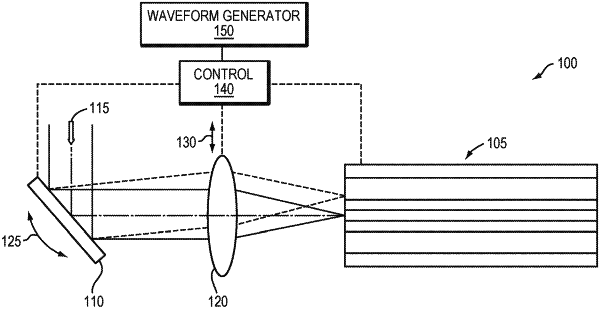| CPC G02B 6/4296 (2013.01) [B23K 26/0604 (2013.01); B23K 26/064 (2015.10); B23K 26/0622 (2015.10); B23K 26/0734 (2013.01)] | 57 Claims |

|
1. A method of processing a workpiece, the method comprising:
providing a laser and an optical fiber having multiple interior regions, in-coupling of a laser emission into each of the interior regions causing the fiber to produce an output having a different spatial output profile;
in a temporal pattern, steering the laser emission to a plurality of the interior regions of the fiber such that the output has different spatial output profiles; and
while directing the output onto the workpiece to process the workpiece, causing relative movement therebetween,
wherein:
the temporal pattern has a frequency sufficient such that the workpiece is processed, during the relative movement between the workpiece and the output, by an effective output shape combining the different spatial output profiles,
the workpiece undergoes a time-based response to the output based on the spatial output profile and a power density thereof, and
the relative movement occurs no faster than a maximum processing speed, the maximum processing speed (i) being selected based on the time-based response of the workpiece and the frequency of the temporal pattern and (ii) ensuring that the response is to the effective output shape.
|